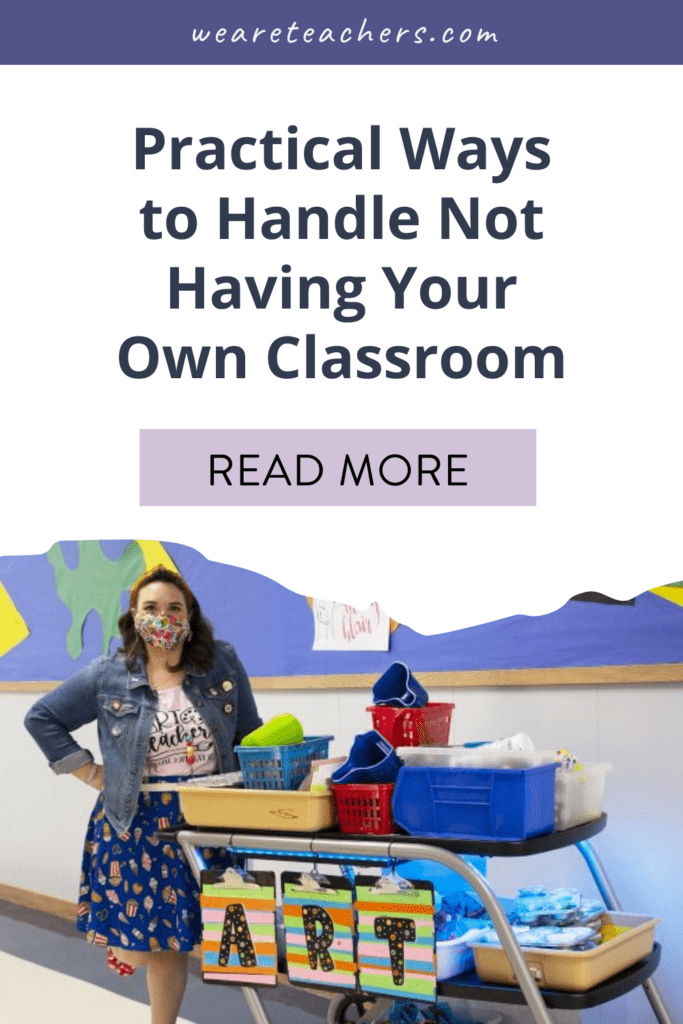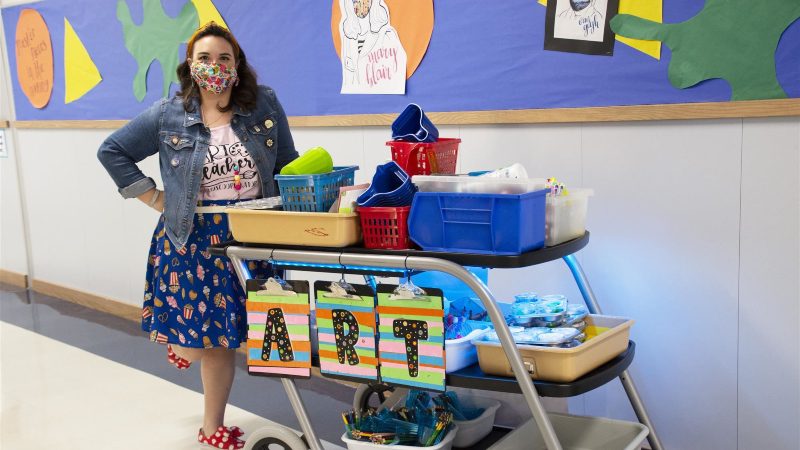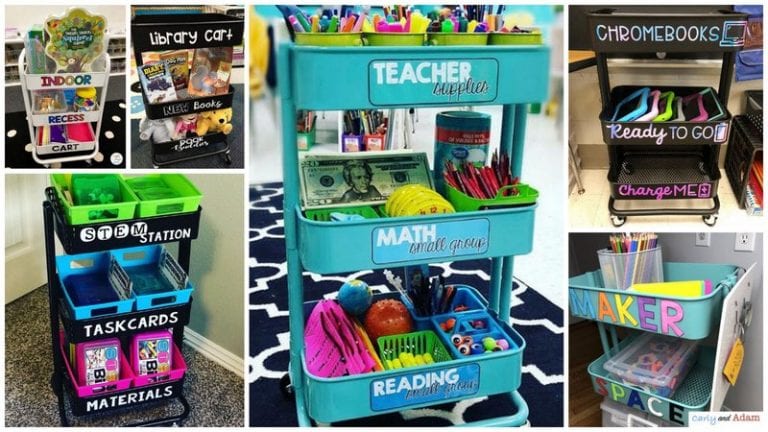Being a floating teacher (a teacher without their own space) is not the ideal situation, but in many districts, it’s the reality for new and/or part time teachers. Needless to say, when you don’t have your own classroom, you need to be uber organized in a very portable way. Below are some tips and tricks from teachers that are living the “floater” life that will help save your sanity.
Survey Says: Use a Cart
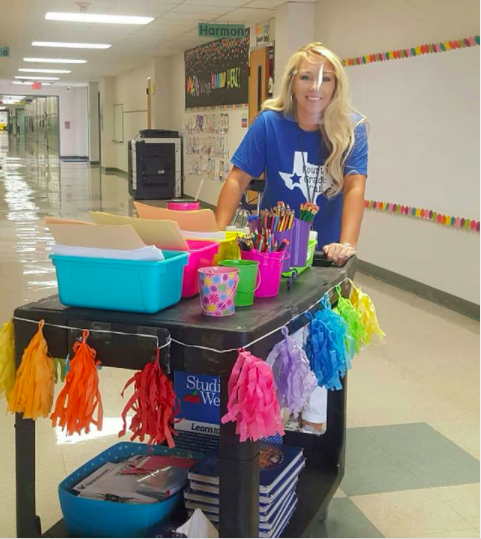
The vast majority of teachers we spoke to advocate using a cart as your portable teaching center. “Embrace cart life!” advises teacher Kiersti H. Jennifer M. agrees, “Don’t let your cart limit your teaching! The key to success is figuring out the essentials you will need to carry to meet the needs of your students in the space you have.”
A few teachers took a different approach, advocating using rolling bags, tool boxes, backpacks, aprons, and file boxes. Regardless of what you use as your command central, here are teacher-tested tips to help you handle not having your own classroom.
Carry your own classroom supplies
Make sure you have all the supplies you need at the ready. What you carry depends on your students’ needs. Some suggestions from the teachers we talked to: pencils, pens, highlighters, sticky notes, note cards, dry erase markers and erasers, a turn in tray, accordion folders for each period, a folder for extra handouts, sign-out clipboard, and hall passes.
[contextly_sidebar id=”66aikxQuvFeNG3L3RXtpW7RKIeriugiz”]
But limit it to only the essentials
You do need to be self-sufficient, but carts (backpacks, tool boxes, etc.) can get really heavy, really fast. Streamline and only carry the must-haves you need to make it through your day.
Stock up on binders and folders
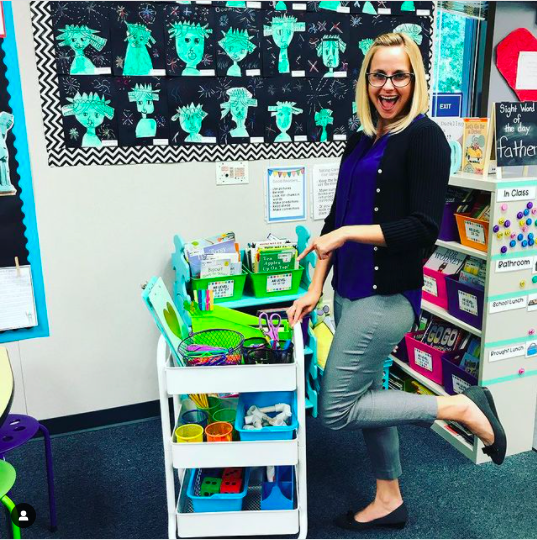
Being a floating teacher means having to work extra hard at staying organized. Have one binder or folder for each prep to keep lesson plans, handouts, and other materials organized.
Develop a color code system
Sort and color-code everything by subject or class period. That way, you won’t misfile important papers or waste class time searching for the resources you need.
Label everything!
No one has time to shuffle through papers to find what you need for each class period. A few teachers suggested using labelled or color-coded binder clips to keep track of handouts, homework, tests, etc.
Carry a calendar with you
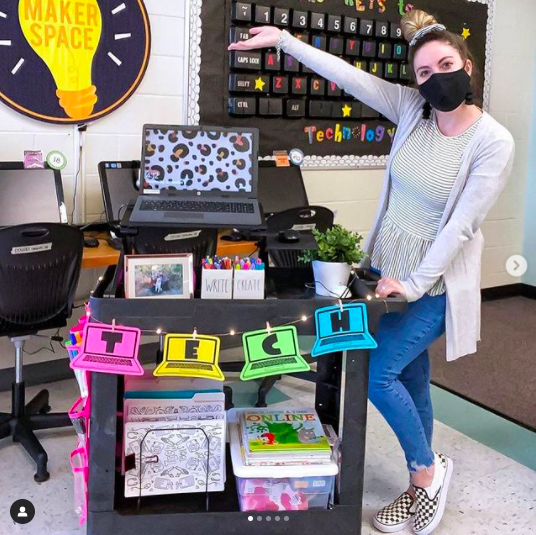
It’s sometimes hard for students to schedule time for extra help or conversations with a floating teacher. Make sure you have your calendar available so you can connect with kids who need you.
Utilize technology
Scan handouts so you can access them electronically. Create your own classroom communication center using Google Classrooms or a similar platform. This will limit the amount of paper that goes back and forth. Carry an extension cord to help with technology set up in each classroom.
Don’t skip your daily routine
One floating teacher we spoke with carries a tri-fold board that lays out the daily routine, which she sets out each day to remind students that classroom rules apply even when you’re not in a traditional classroom.
Own it
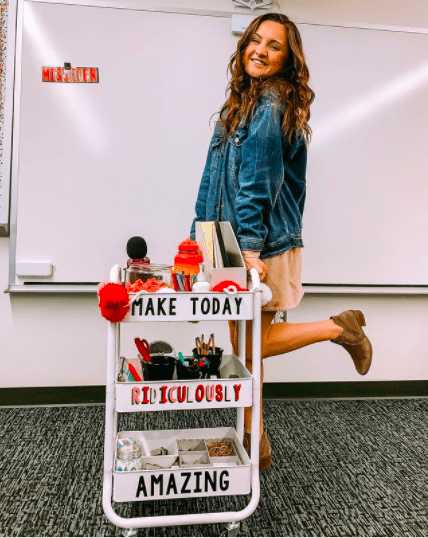
Decorate your cart to suit your own personal style. One teacher suggests adding holiday decorations and inspiring posters, even adding a bike bell and streamers to her cart. Because she makes it fun, her students get a kick out of her cart and always look forward to her arrival.
Designate piles
Separate papers to be handed out from papers to be graded. Plastic accordion files come in a wide variety of colors and even have tabs for labelling. One teacher in particular likes to use these folders as her turn in bin.
Finally, ask for space
Develop a good relationship with the teachers whose classrooms you are sharing. Ask each of them if you can use shelf space or a cabinet drawer to store your supplies. If not, see if you can store a file box in an unobtrusive place. Also, ask for a bulletin board, section of a whiteboard, or wall space to decorate and display student work.
Are you a floating teacher? Come share your best tips on the WeAreTeachers HELPLINE group on Facebook.
Plus, 50 STEM activities to help kids think outside the box.
